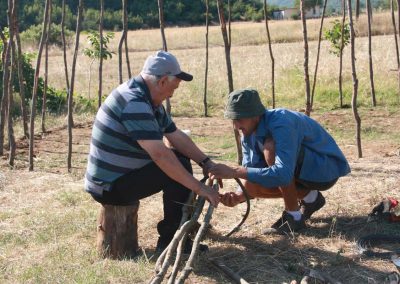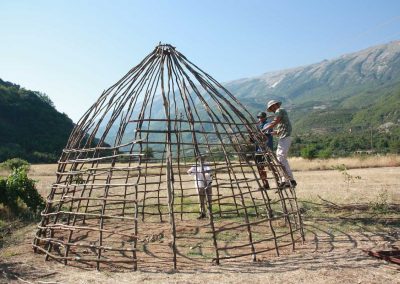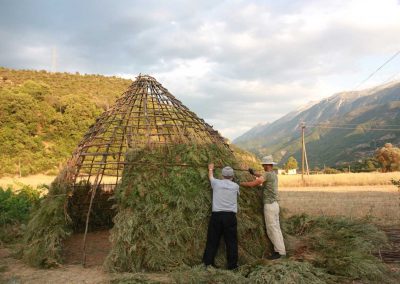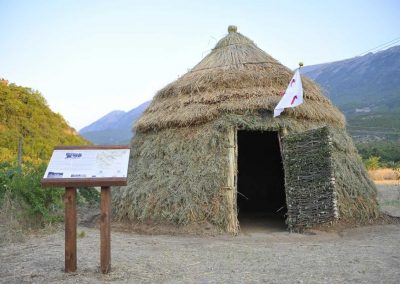Reconstructing a Vlach historical dwelling – the kalive
A glimpse into the Vlachs’ transhumance journeys
The Upper Vjosa Valley was one of the main routes used during Vlachs seasonal pastoral movements from winter pastures along the Ionian coast to summer pastures in the mountain areas of southeast Albania. The whole journey lasted from ten to twelve days, involving entire families accompanied by large herds of sheep. Along the way they would set up simple woolen tents, and once arrived their summer pastures they built encampments consisting of circular, thatched-roof structures known as ‘kalive’.
By the Medieval era, many Vlach families had transitioned from nomadic to settled way of life.
However, other Vlachs continued their seasonal migration until the 1950s, when the Albanian state banned Vlach transhumance, and several families were settled in villages around the Vjosa valley.
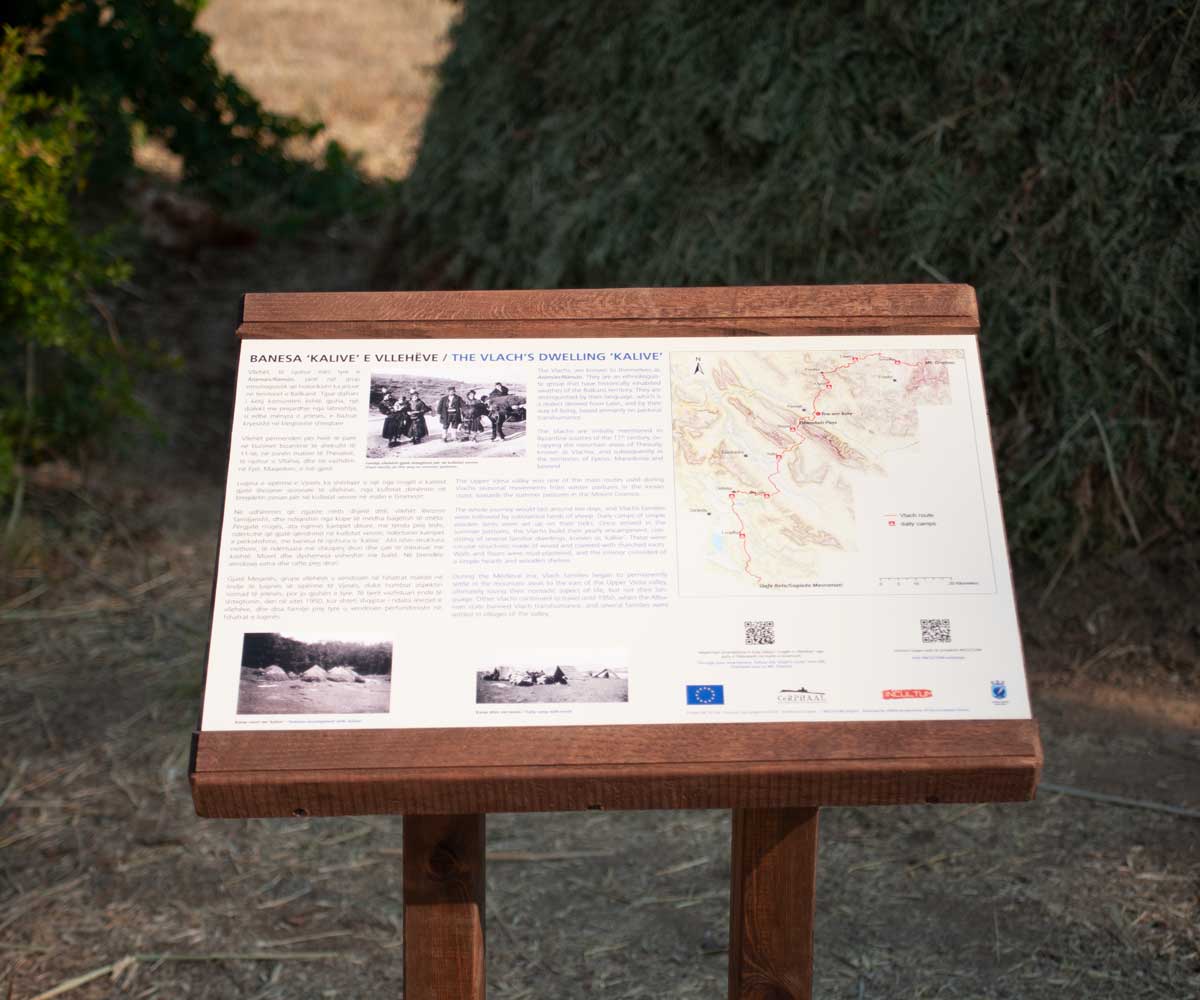
Preserving a symbolic of the Vlach’s past
In July 2022, CeRPHAAL as part of the INCULTUM project undertook an initiative aimed at reviving aspects of Vlach cultural heritage by reconstructing their historic dwelling – the kalive. This project aims to record and promote the lost traditions of the Vlach community, offering a tangible connection to their historical way of life. The dwelling was constructed due to the detailed memory of individuals who once lived in pastoral transhumant societies across the landscape of Upper Vjosa valley. It was built using traditional techniques and materials similar to those employed by Vlach builders in the past.
The reconstruction took place at a historically significant location, once a regular stop along the long-distance transhumant movement towards the summer pastures in Mt Gramoz. Today, the site is a camping destination visited by both domestic and international visitors.
To help visitors learn more about the history of the Vlachs, an interpretative panel was installed at the site, containing information in both Albanian and English, featuring historical pictures and a map tracing their migration route to upland summer pastures. It includes QR codes that allow visitors access to the downloadable historical route in Wikiloc: Vlach transhumance Route https://www.wikiloc.com/hiking-trails/vlachs-transhumance-route-108659966
The reconstruction project ended in a celebration event that brought together members of the Vlachs community, local residents, researchers, and tourists staying at the campsite. This gathering honored the cultural heritage of the Vlach and provided an opportunity to share their history and traditions with a wider audience, fostering a deeper connection to the territory’s past.



